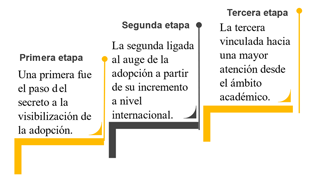Who am I? Why am I like this? Perceptions of the dynamic identity of adolescents with adoptive family bond
DOI:
https://doi.org/10.15381/espiral.v6i12.29005Keywords:
adoptive relationships, adolescence, dynamic identityAbstract
The purpose of this study is to know the perception that a group of adolescent adoptees have about themselves and about their significant relationships and connections in their lives; the objective being to analyze how the adoptive family bond is related to the dynamic identity of adopted adolescents.
The study was developed under a qualitative approach of correlational level and basic type. The developed design had a narrative approach; the sample was made up of 7 adolescents of both sexes, between 12 and 16 years of age, adopted Children of families residing in Lima. The technique used was the self-portrait and autobiography, with the guides being the instruments used and whose information was processed through análisis matrices.
In light of the results, the adoptive family bond is perceived as the most significant fact in the lives of the participating people, Although not defining in the construction of their identity condition, since the bond with Friends also has a special meaning when considered like your second family. With Pets, there is a particular bond because one of the participants even considers them as her adopted daughter. It is worth highlighting the especially significant bond that 4 participants indicated they had generated with their adoptive grandparents. Although family relationships and ties contribute to the construction of identity, it is also evident how it is built Thanks to a diversity of significant relationships and bonds throughout life, even before birth.

Downloads
Published
Issue
Section
License
Copyright (c) 2024 Eda Elizabeth Aguilar Samanamud

This work is licensed under a Creative Commons Attribution 4.0 International License.
LOS AUTORES RETIENEN SUS DERECHOS:
a. Los autores retienen sus derechos de marca y patente, y también sobre cualquier proceso o procedimiento descrito en el artículo.
b. Los autores retienen el derecho de compartir, copiar, distribuir, ejecutar y comunicar públicamente el artículo publicado en la revista Espiral (por ejemplo, colocarlo en un repositorio institucional o publicarlo en un libro), con un reconocimiento de su publicación inicial en la revista Espiral.
c. Los autores retienen el derecho a hacer una posterior publicación de su trabajo, de utilizar el artículo o cualquier parte de aquel (por ejemplo: una compilación de sus trabajos, notas para conferencias, tesis, o para un libro), siempre que indiquen la fuente de publicación (autores del trabajo, revista, volumen, número y fecha).





